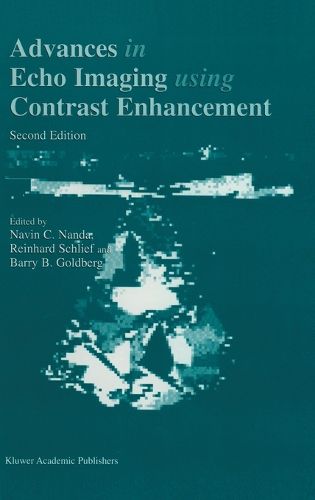Readings Newsletter
Become a Readings Member to make your shopping experience even easier.
Sign in or sign up for free!
You’re not far away from qualifying for FREE standard shipping within Australia
You’ve qualified for FREE standard shipping within Australia
The cart is loading…






This title is printed to order. This book may have been self-published. If so, we cannot guarantee the quality of the content. In the main most books will have gone through the editing process however some may not. We therefore suggest that you be aware of this before ordering this book. If in doubt check either the author or publisher’s details as we are unable to accept any returns unless they are faulty. Please contact us if you have any questions.
The first edition of this definitive text ran to 24 chapters. The second edition, reflecting the explosive growth of interest in echo-enhancement, contains 44. The first section deals with some of the most important emerging issues and technologies and covers harmonic imaging, the use of echo-enhancers to provide quantitative information, and the application of enhanced power Doppler to tissue imaging. The second, on contrast echocardiography, explores the use of echo-enhancement during transesophageal imaging. One chapter describes the use of contrast-enhancement transesophageal imaging to determine coronary flow reserve and another gives a detailed account of the application of the technique to the evaluation of left ventricular function. Other authors describe the intraoperative use of contrast echocardiography and discuss the potential of myocardial contrast echocardiography to replace thallium scintigraphy. Another chapter covers the emerging technique of transient response imaging and its role in the assessment of myocardial perfusion, and two chapters are devoted to three-dimensional contrast echocardiographic assessment of myocardial perfusion. Use of echo-enhancement in the evaluation of peripheral circulation is discussed in chapters on carotid and peripheral arterial flow imaging and others that describe renal and hepatic vascular imaging. The newer applications of echo-enhancement outside the cardiovascular system are described in three chapters devoted to the visualization of tumour vasculature. The final chapters look to the future and cover the imaging of intramyocardial vasculature, the development of site-specific agents and the emergence of the new acoustically active agents.
$9.00 standard shipping within Australia
FREE standard shipping within Australia for orders over $100.00
Express & International shipping calculated at checkout
Stock availability can be subject to change without notice. We recommend calling the shop or contacting our online team to check availability of low stock items. Please see our Shopping Online page for more details.
This title is printed to order. This book may have been self-published. If so, we cannot guarantee the quality of the content. In the main most books will have gone through the editing process however some may not. We therefore suggest that you be aware of this before ordering this book. If in doubt check either the author or publisher’s details as we are unable to accept any returns unless they are faulty. Please contact us if you have any questions.
The first edition of this definitive text ran to 24 chapters. The second edition, reflecting the explosive growth of interest in echo-enhancement, contains 44. The first section deals with some of the most important emerging issues and technologies and covers harmonic imaging, the use of echo-enhancers to provide quantitative information, and the application of enhanced power Doppler to tissue imaging. The second, on contrast echocardiography, explores the use of echo-enhancement during transesophageal imaging. One chapter describes the use of contrast-enhancement transesophageal imaging to determine coronary flow reserve and another gives a detailed account of the application of the technique to the evaluation of left ventricular function. Other authors describe the intraoperative use of contrast echocardiography and discuss the potential of myocardial contrast echocardiography to replace thallium scintigraphy. Another chapter covers the emerging technique of transient response imaging and its role in the assessment of myocardial perfusion, and two chapters are devoted to three-dimensional contrast echocardiographic assessment of myocardial perfusion. Use of echo-enhancement in the evaluation of peripheral circulation is discussed in chapters on carotid and peripheral arterial flow imaging and others that describe renal and hepatic vascular imaging. The newer applications of echo-enhancement outside the cardiovascular system are described in three chapters devoted to the visualization of tumour vasculature. The final chapters look to the future and cover the imaging of intramyocardial vasculature, the development of site-specific agents and the emergence of the new acoustically active agents.